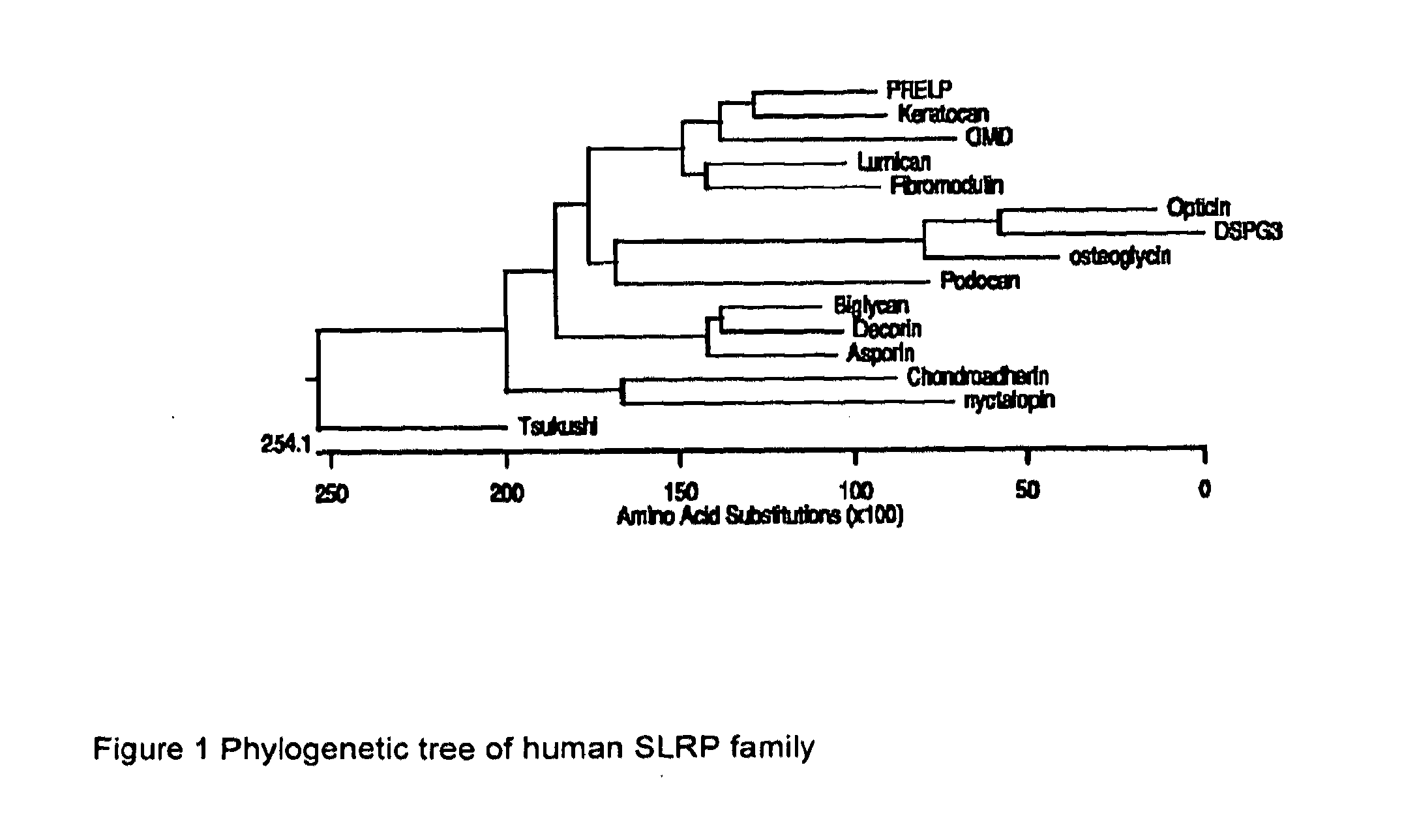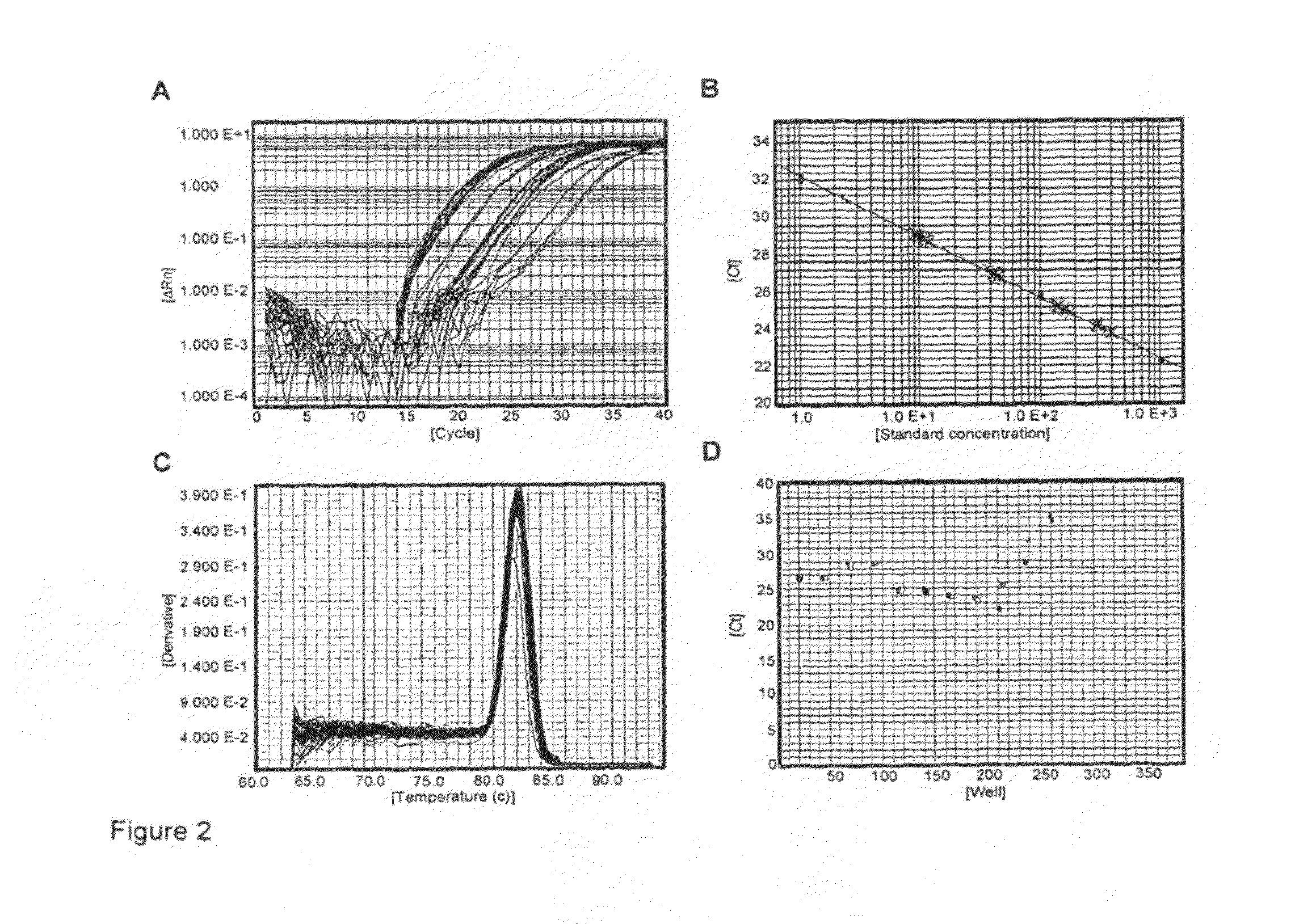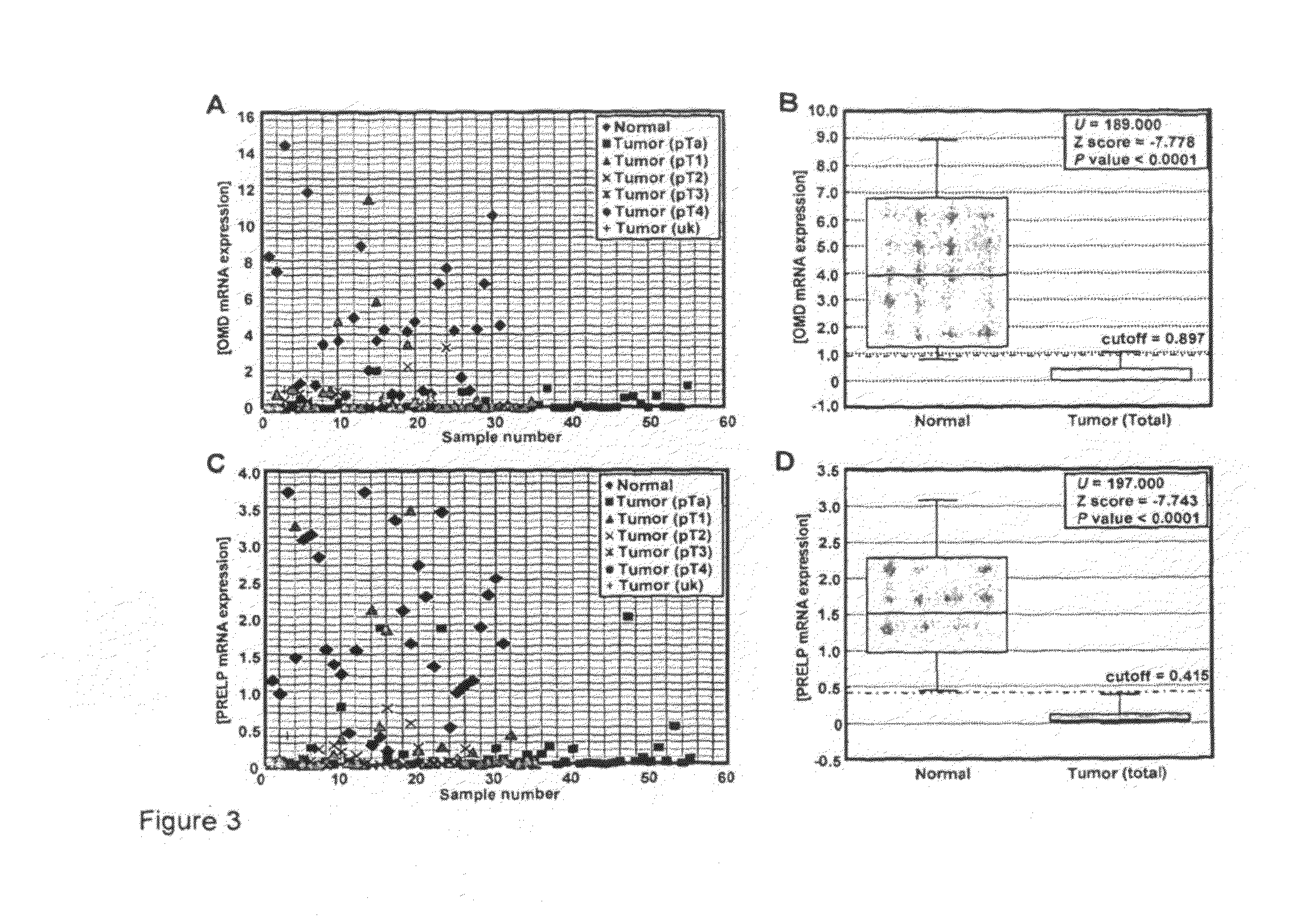Cancer diagnosis and treatment
a cancer and diagnosis technology, applied in the field of cancer diagnosis and treatment, can solve the problems of no general treatment method, many cancers still do not respond to treatment, and disrupt the homeostasis of tissue, and achieve the effect of greater accuracy in determination and high sensitivity and specificity
- Summary
- Abstract
- Description
- Claims
- Application Information
AI Technical Summary
Benefits of technology
Problems solved by technology
Method used
Image
Examples
example 1
Background to SLRPS
[0175]OMD and PRELP are members of the small leucine-rich repeat proteoglycans (SLRP) family of proteins which are present in extracellular matrices.
[0176]The extracellular matrix (ECM) is believed to play an important role in the regulation of tumour initiation and growth through regulation of microenvironment. Normal cells require a basement membrane for growth. With the development of epithelial malignancy, major changes occur in the organization and distribution of ECM, which supports and forms the basement membrane (BM). Invasive tumors are characterized by a defective BM adjacent to cells, whereas in benign tumors the BM remains intact (Liotta, 1986).
[0177]The SLRP family is characterized by the conserved leucine rich repeat domain at the centre of proteins. The number of repeats depends on the members. The SLRP family members have significantly distinct the NH2-termini and COOH-termini, which largely provides the functional differences between these protein...
example 2
Examination of Diagnostic Value of OMD and PRELP in Bladder Cancer Using Quantitative RT-PCR
[0182]126 surgical specimens of primary urothelial cell carcinoma were collected, either at cystectomy or trans-uretheral resection, and snap frozen in liquid nitrogen. Thirty-four specimens of normal bladder urothelium were collected from areas of macroscopically normal urothelium in patients with no evidence of urothelial malignancy. Use of tissues for this study was approved by Cambridgeshire Local Research Ethics Committee.
[0183]Cancer tissues and normal tissues were isolated by laser capture microdissection by following the procedure. Five sequential sections of 7 μm thickness were cut from each tissue and stained using Histogene™ staining solution (Arcturus, Calif., USA) following the manufacturer's protocol. Slides were then immediately transferred for microdissection using a Pix Cell II laser capture microscope (Arcturus, Calif., USA). Two 7 μm ‘sandwich’ sections adjacent to the tiss...
example 3
Examination of Diagnostic Value of OMD and PRELP in Kidney Cancer by Quantitative RT-PCR
[0190]78 renal cell carcinoma surgical specimens of primary kidney carcinoma were collected and snap frozen in liquid nitrogen. 15vspecimens of normal kidney urothelium were collected from areas of macroscopically normal urothelium in patients with no evidence of urothelial malignancy. Use of tissues for this study was approved by Cambridgeshire Local Research Ethics Committee. All further procedures for quantitative RT-PCR were performed as described above.
[0191]The results are indicated in FIG. 4 and Table 3 and summarised in the main text. Based on FIGS. 3 and 4, Table 3 and 4, we examined diagnostic values of OMD and PRELP (Table 4). The result is summarised hereinbefore.
PUM
| Property | Measurement | Unit |
|---|---|---|
| Fraction | aaaaa | aaaaa |
| Fraction | aaaaa | aaaaa |
| Fraction | aaaaa | aaaaa |
Abstract
Description
Claims
Application Information
 Login to View More
Login to View More - R&D
- Intellectual Property
- Life Sciences
- Materials
- Tech Scout
- Unparalleled Data Quality
- Higher Quality Content
- 60% Fewer Hallucinations
Browse by: Latest US Patents, China's latest patents, Technical Efficacy Thesaurus, Application Domain, Technology Topic, Popular Technical Reports.
© 2025 PatSnap. All rights reserved.Legal|Privacy policy|Modern Slavery Act Transparency Statement|Sitemap|About US| Contact US: help@patsnap.com



